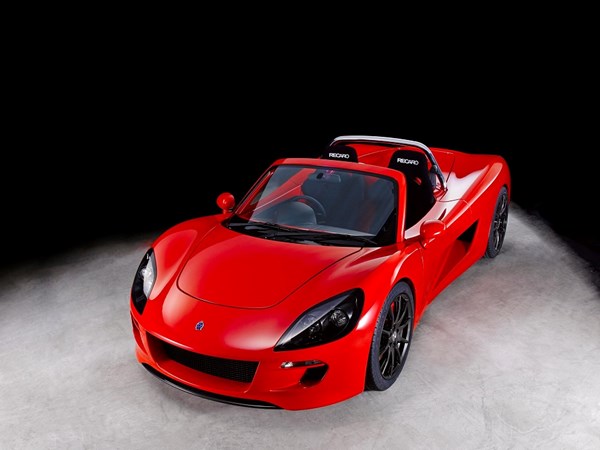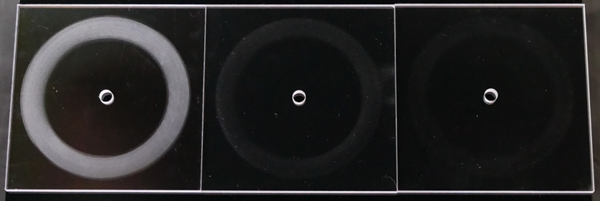The “Holy Grail” of PC Glazing Appears on the Sporty Electric Tommykaira ZZ
Teijin has developed the world’s first “pillar-less” PC windshield for a commercial car.

There’s been a lot of activity taking place in the automotive PC glazing arena within the last few years, starting with non-windshield glazing such as fixed rear-side windows and rear windows, with developments led by companies such as SABIC and Covestro.
Most recently, this has included a new-generation Buick GL8 and GL8 Avenir luxury multi-purpose vehicles, which sport what is reportedly the largest PC rear-quarter window in the world. It is molded from SABIC’s Lexan PC. Yet another, was a new electric concept car featured by Covestro at K2016, which features a wrap-around glazing made of transparent Makrolon PC.
Just this week, we found out that what appears the “holy grail” of PC glazing—the world’s first full-width (“pillar-less”) PC windshield—has made a splash in a commercial vehicle. The news came from Japan’s Teijin Ltd., that the windshield, made from the company’s Panlite PC and produced by GLM Co., Ltd—an EV (electric vehicle) manufacturer launched by Kyoto University, appears on the sporty electric vehicle Tommykaira ZZ.
PC resins are prohibited from use in the windshields due to automotive safety standards. Teijin’s PC-resin window, thanks to its high resistance to abrasion and weather, meets new Japanese standards that will become effective in July, paving the way for its use in the Tommykaira ZZ. Meanwhile, GLM expects to acquire street-ready certification for the Tommykaira ZZ fitted with Teijin’s PC windshield, and then will offer the window as an option by this autumn.
Teijin also plans to market its PP resin window concept for automakers in the U.S. and the EU, where demands for properties equivalent to new standards for safety and security are increasing. By thickening the perimeter of its PC window, Teijin says it managed to eliminate the need for the A-pillar, or vertical support that divides the windshield and front window. As a result, the transparent PC resin achieves unobstructed sight lines for safer driving and more enjoyable viewing. The integrated PC-resin pillar-less window is also 36% lighter in weight than a conventional front window with an A-pillar.
Teijin provides PC solutions for plastic glazing, including for train windows, automotive panoramic roofs and quarter windows, leveraging PC’s competitive advantages over glass—including 200 times greater resistance to impact and just half the weight.
This past March, the company developed a new plasma-enhanced chemical vapor deposition (plasma CVD) hard-coating technology for the wet hard-coat layer, which is said to offer the same level of abrasion resistance and weather resistance as glass windows. The company collaborated with Tsukishima Kakai Co. to develop a plasma CVD pilot plant to treat large PC windows with uniform coatings of plasma CVD. Large surfaces, including the size of actual vehicle’s resin windows and those with complex curves are now being glazed at the pilot plant.
The company says it’s leveraging its lightweight, strong, high-performance materials and integrated composite technologies as one of the key focuses of the transformation strategies for the group’s medium-term management plan, under which the company aims to become a multi-material components supplier that works closely with automakers to develop various applications for lightweight automotive bodies.
Meanwhile, SABIC sources weighed in on PC glazing activities with the following points:
● Various automakers have executed a “pillar-less” style windscreen design in concept vehicles through the years.
● Design trends support the use of PC glazing in windscreens (and in other window applications). There is interest from automakers in PC glazing to create complex curvatures on the edges of windscreens and take advantage of part-integration opportunities.
● SABIC has expertise and experience working with the industry on “pillar-less” style design approaches.
● SABIC automotive glazing experts played a support tole in the informal group that provided guidance on the proposed regulatory rule in Europe to allow for PC glazing in windscreens. This legislation was introduced under ECE R43 in 2015 and is now used as a reference for other countries.

Related Content
Polymer Showdown — PC/ABS vs. PC/PBT — May the Best Material Win
First in a series, experts from plastics engineering consultancy The Madison Group will pit leading thermoplastics against each other to see how they differ in processing characteristics, chemical resistance, thermal and mechanical performance, and more.
Read MoreICIS Launches: Ask ICIS Generative AI Commodities Assistant
Said to be the first of its kind, this AI assistant will enhance access to ICIS’ intelligence and insights for the energy and chemical markets.
Read MoreAutomotive Awards Highlight Emerging Technologies
Annual SPE Automotive event gives nods to several ‘firsts’ as well as sustainability.
Read MoreThe Fantasy and Reality of Raw Material Shelf Life: Part 1
Is a two-year-old hygroscopic resin kept in its original packaging still useful? Let’s try to answer that question and clear up some misconceptions.
Read MoreRead Next
People 4.0 – How to Get Buy-In from Your Staff for Industry 4.0 Systems
Implementing a production monitoring system as the foundation of a ‘smart factory’ is about integrating people with new technology as much as it is about integrating machines and computers. Here are tips from a company that has gone through the process.
Read MoreBeyond Prototypes: 8 Ways the Plastics Industry Is Using 3D Printing
Plastics processors are finding applications for 3D printing around the plant and across the supply chain. Here are 8 examples to look for at NPE2024.
Read More
























